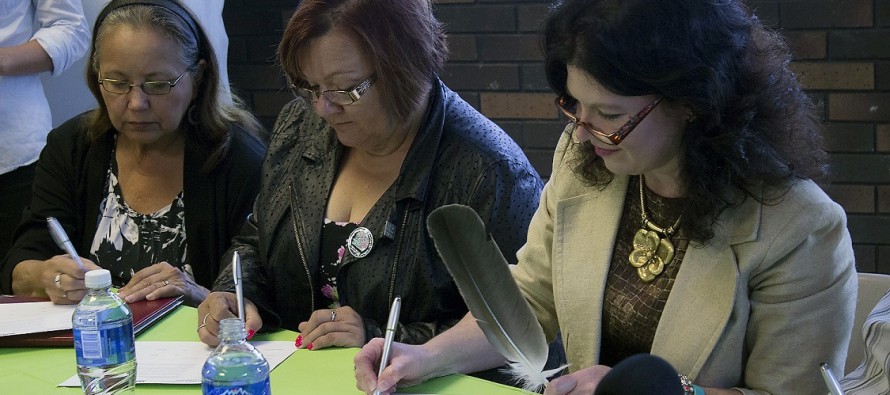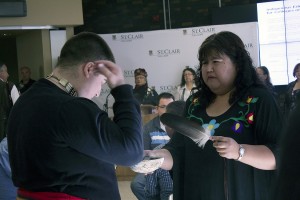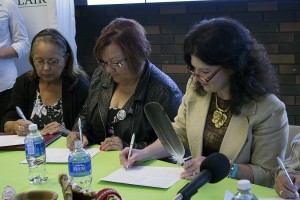A new approach to learning for aboriginal students

By Ashley Ann Mentley
Local First Nations, Metis and Inuit people will now have post-secondary education options tailored to their specific cultural and learning needs.
St. Clair College has joined approximately 36 colleges and institutes in signing the Indigenous Education Protocol. This document, which was developed by Colleges and Institutes Canada, is based on seven principles that address learning needs and support socio-economic development in indigenous communities.
According to Patti France, president of St. Clair College, there are between 80 to 100 indigenous students enrolled this year. Between the Windsor and Chatham campuses, total enrollment numbers are more than 8,000, meaning aboriginal people make up less than two per cent of the student body.
“We want more, we welcome more,” said France. “Let’s make sure all First Nations, Inuit and Metis students know that our doors, and all post-secondary education options elsewhere, are wide open to them.”
During an official signing ceremony at the main campus of the college, Eagle Flight Drum from London performed traditional music. Elder Mona Stonefish recited an opening prayer and welcomed the audience to smudge – a process involving the burning of incense meant to cleanse the body.
Stonefish thanked the institutions of Canada for finally recognizing who they are as indigenous people.
The Aboriginal Education Council is responsible for representing the students on St. Clair’s campus. Chair of the AEC Bernita Brigham-Jacobs delivered a moving speech describing how her own mother and grandmother were sent away to residential schools.
“Speaking here is about the first generation in my family that didn’t have to deal with that. My son and my grandchildren won’t have to deal with that,” Brigham-Jacobs said.
She also said institutions in Canada have a role to play in righting the wrongs of the residential schools and this is how Canada will become a place where history won’t repeat itself.
Colleges and Institutes Canada said they recognize that these are often the only post-secondary options available in remote northern communities and it is important that the values and cultures of indigenous peoples be respected.
So far, the protocol has been signed by educational institutions from seven provinces and two territories. Brigham-Jacobs said when an aboriginal person enters a mainstream institution, there is a lot of learning and understanding that needs to happen from both sides.
“The way we think, the way we see the world and look at the environment – this country could learn from us and hopefully that will happen,” she said.
Sidebar:
All institutions who sign the Indigenous Education Protocol agree to the following seven principles:
- Commit to making Indigenous education a priority.
- Ensure governance structures recognize and respect Indigenous peoples.
- Implement intellectual and cultural traditions of Indigenous peoples through curriculum and learning approaches relevant to learners and communities.
- Support students and employees to increase understanding and reciprocity among Indigenous and non-Indigenous peoples.

- Commit to increasing the number of Indigenous employees with ongoing appointments throughout the institution, including Indigenous senior administrators.
- Establish Indigenous-centered holistic services and learning environments for learner success.
- Build relationships and be accountable to Indigenous communities in support of self-determination through education, training and applied research.



